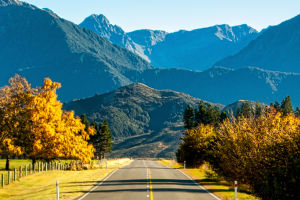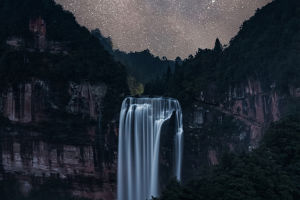Xinjiang, located in the northwest of China, is the largest province in the country, covering an expansive area of 1.66 million square kilometers—nearly one-sixth of China's total land area.
Situated in the heart of Eurasia, Xinjiang shares borders with eight countries, forming a unique blend of diverse cultures, landscapes, and traditions.
Dear Lykkers, traveling to Xinjiang offers a remarkable experience where you can discover the historical landmarks of the ancient Silk Road and the colorful folklore of various minority groups. The Silk Road, a historical trade route, facilitated cultural exchanges between the East and West, leaving behind a wealth of relics, including frontier passes, ancient cities, Buddhist caves, temples, and more. These treasures form a living legacy that is part of the vibrant history of Xinjiang.
The region is also home to a variety of landscapes, from the majestic Tianshan Mountains to the vast deserts and picturesque lakes. Whether you're hiking through snow-capped mountains or relaxing by serene lakes, Xinjiang's natural beauty never fails to impress.
Features
Chinese Name: 新疆 (Xīnjiāng)
Area: 1,650,257 square kilometers
Time Zone: UTC+8
Population (2018): Approximately 25.87 million
Location: Northwest China
Climate: Temperate Continental Climate
Post Code: 830000-840000
Area Code: (+86) 0991-0909
Average Annual Rainfall: 166mm
Administration Type: Autonomous Region
Xinjiang Tourism Resources
Xinjiang is renowned for its diverse landscapes, including deserts, Gobi regions, snow-capped mountains, forests, lakes, and grasslands. The region is also home to various ethnic groups such as Uyghurs, Kazakhs, and Tajiks, each contributing to the region's rich cultural heritage.
Northern Xinjiang: Famous for its stunning natural scenery, northern Xinjiang includes cities such as Urumqi, Turpan, Ili, and Altay. The area is characterized by its expansive grasslands and the traditional nomadic lifestyle of the herders.
Southern Xinjiang: Known for its historical relics and rich culture, southern Xinjiang includes cities like Kashgar, Khotan, and Aksu, where ancient traditions and the fusion of desert, oasis, and agriculture create a unique environment.
Xinjiang Tourism Attractions
1. Heavenly Lake - The Pearl of Tianshan Mountain
This crystal-clear lake, surrounded by snow-covered peaks, is a mesmerizing sight. The magnificent Bogda Peak reflects in the lake, creating an awe-inspiring view that transports visitors to a fairy-tale world.
2. Ili - The Beauty of Nature
The Ili region, with its ever-changing landscapes, includes highlights such as Narati Grassland, Kalajun Prairie, and Huocheng Lavender Farm. These locations offer breathtaking views that evolve with the seasons.
3. Naraty Grassland
One of the world’s top grasslands, Naraty offers a rich tapestry of landscapes—towering mountains, lush forests, and expansive meadows. It is also an excellent place to immerse in Kazakh cultural traditions.
4. Gobi Desert
Xinjiang’s Gobi Desert is vast and desolate, offering a unique experience as you journey through this arid expanse. It’s the perfect spot for those seeking solitude and a connection with nature.
5. Kanas Nature Reservation Park
This picturesque park is home to Siberian larches, wild animals, and a fascinating local culture. The Tuwa people, descendants of ancient soldiers left behind by Genghis Khan, add a fascinating cultural layer to this beautiful destination.
6. Sayram Lake
Known as the "last drop of tears of the Atlantic," Sayram Lake offers stunning vistas, with its sapphire waters surrounded by lush grasslands and vibrant wildflowers. The lake’s beauty makes it a must-visit for nature lovers.
7. Karakul Lake and White Sand Lake along the Karakoram Highway
Located between the towering Muztagh Ata and Kongur mountains, Karakul Lake is a serene, high-altitude lake reflecting snow-capped peaks and rolling grasslands.
8. Poplar Forest
In mid-October, Xinjiang’s poplar forests transform into a sea of golden foliage. This stunning sight in the desert is a testament to the region’s resilience and natural beauty.
When Is the Best Time to Travel Xinjiang?
The best time to visit Xinjiang is from April to November, although winter can also be a magical time for those who enjoy snow and winter sports.
Spring (March to May): This season sees an explosion of flowers, including lavender, apricot blossoms, and peach flowers, particularly in southern Xinjiang.
Summer (June to August): The perfect time to experience the warmth of Xinjiang, with its fresh fruits, fragrant melons, and cool mountain resorts like Heavenly Lake.
Autumn (September to November): A lovely season when the summer heat fades and the harvest period brings the best of Xinjiang’s fruits and delicacies.
Winter (December to February): Northern Xinjiang becomes a winter wonderland, perfect for snow sports like skiing and ice skating.
Visit Xinjiang with a Reliable Travel Agency
Thanks to its vast size, Xinjiang remains relatively uncrowded, even during peak tourist seasons. To explore Xinjiang fully, it is advisable to choose a reputable travel agency that can help plan your trip and provide expert guidance.


